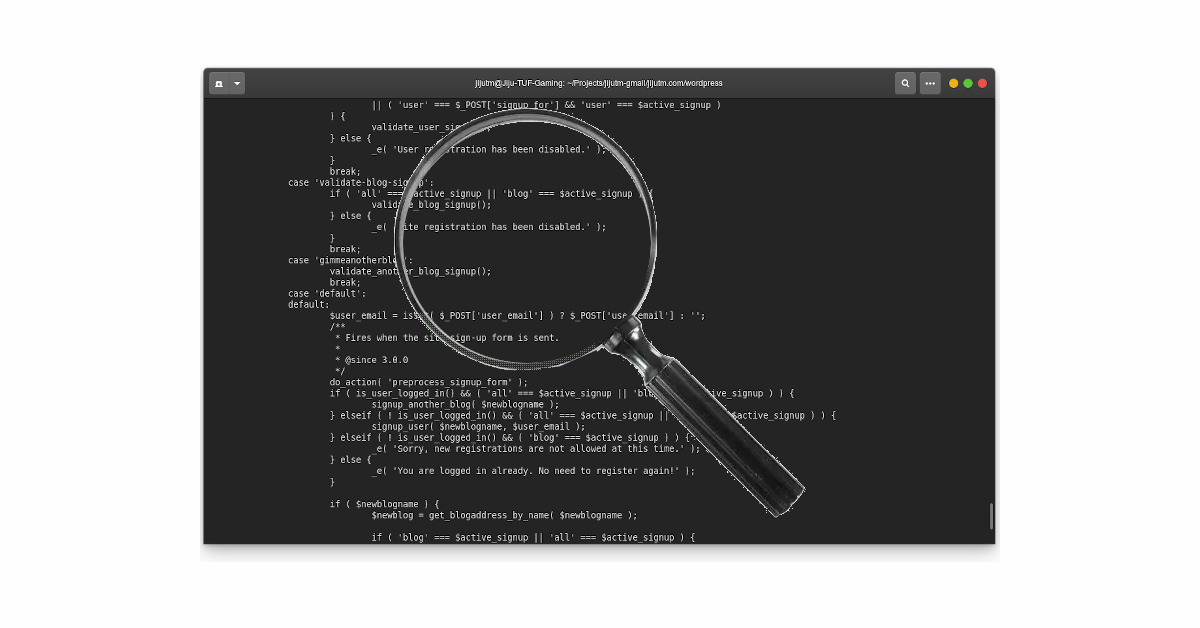Web applications built with PHP are ubiquitous, powering a significant portion of the internet. However, their widespread use also makes them a frequent target for malicious actors. Ensuring the security of these applications is paramount, especially when development is handled by a third-party team. This article outlines a comprehensive approach to validating PHP code for vulnerabilities, minimizing risks and protecting sensitive data.
The Importance of Proactive Security:
Security should be a core consideration throughout the entire software development lifecycle, not an afterthought. Addressing vulnerabilities after deployment is significantly more costly and time-consuming than preventing them in the first place. Proactive security measures, including thorough code validation, are crucial for mitigating risks and maintaining a secure application.
Key Vulnerabilities to Watch For:
Several common vulnerabilities frequently plague PHP applications. Understanding these weaknesses is the first step in preventing them:
SQL Injection: Occurs when user-supplied input is directly incorporated into SQL queries, allowing attackers to manipulate database commands.
Cross-Site Scripting (XSS): Enables attackers to inject malicious scripts into web pages viewed by other users, potentially stealing cookies or redirecting users to phishing sites.
Cross-Site Request Forgery (CSRF): Exploits the trust a website has in a user’s browser, allowing attackers to perform unauthorized actions on behalf of the user.
File Inclusion: Arises when user input is used to dynamically include files, potentially allowing attackers to execute arbitrary code.
Command Injection: Happens when user input is used in system commands, allowing attackers to execute commands on the server.
Session Management Issues: Weaknesses in session handling can lead to session hijacking or other security breaches.
Improper Error Handling: Displaying sensitive information in error messages can provide valuable information to attackers.
A Multi-Layered Approach to Validation:
Validating PHP code for vulnerabilities requires a comprehensive, multi-layered approach encompassing various techniques:
- Code Review: Manual Inspection: A meticulous line-by-line examination of the code is essential. This process should focus on identifying patterns indicative of the vulnerabilities listed above. Special attention should be paid to areas where user input is processed or used in database queries, file operations, or system commands.
Peer Review: Involving other experienced developers in the review process offers a fresh perspective and increases the likelihood of identifying overlooked issues. - Automated Tools: Static Application Security Testing (SAST): SAST tools analyze the source code without executing it, identifying potential vulnerabilities based on predefined rules and patterns. These tools can flag issues like SQL injection, XSS, and other common weaknesses. Examples include PHPStan, Psalm, and RIPS.
Dynamic Application Security Testing (DAST): DAST tools test the application in a runtime environment, simulating real-world attacks to uncover vulnerabilities that might not be apparent through static analysis. Tools like OWASP ZAP, Acunetix, and Netsparker fall into this category. - Best Practices and Secure Coding Standards: Adherence to Standards: Following established secure coding guidelines, such as those provided by OWASP, is crucial. These guidelines provide a framework for writing secure code and minimizing vulnerabilities.
Input Validation and Sanitization: Rigorous input validation and sanitization are essential for preventing many common vulnerabilities. All user inputs should be validated on both the client-side and server-side, and potentially harmful characters should be escaped or removed.
Principle of Least Privilege: Granting only the necessary permissions to users and processes minimizes the potential damage from a successful attack.
Regular Updates: Keeping PHP, libraries, frameworks, and the operating system up-to-date is crucial for patching known vulnerabilities.
Specific Considerations When Working with Third-Party Teams:
Clear Communication and Contracts: Establish clear communication channels and include security requirements in contracts with third-party teams.
Code Ownership and Access: Define code ownership and ensure access to the source code for thorough review.
Regular Security Audits: Conduct regular security audits of the application, especially after major updates or releases.
Vulnerability Disclosure Policy: Establish a clear vulnerability disclosure policy to handle security issues responsibly.
For a PHP code quality analyzer plugin for VS Code, the most popular choice is “PHPStan” which is a static code analysis tool that effectively detects potential errors and type issues in your PHP code without needing to actually run it, providing comprehensive insights into code quality. (source Google Search!
Conclusion:
Securing PHP applications requires a proactive and comprehensive approach. By implementing the strategies outlined in this article, including thorough code review, the use of automated tools, adherence to secure coding practices, and careful management of third-party relationships, organizations can significantly reduce the risk of vulnerabilities and protect their valuable data. Remember that security is an ongoing process, and continuous monitoring, testing, and improvement are essential for maintaining a secure application.
